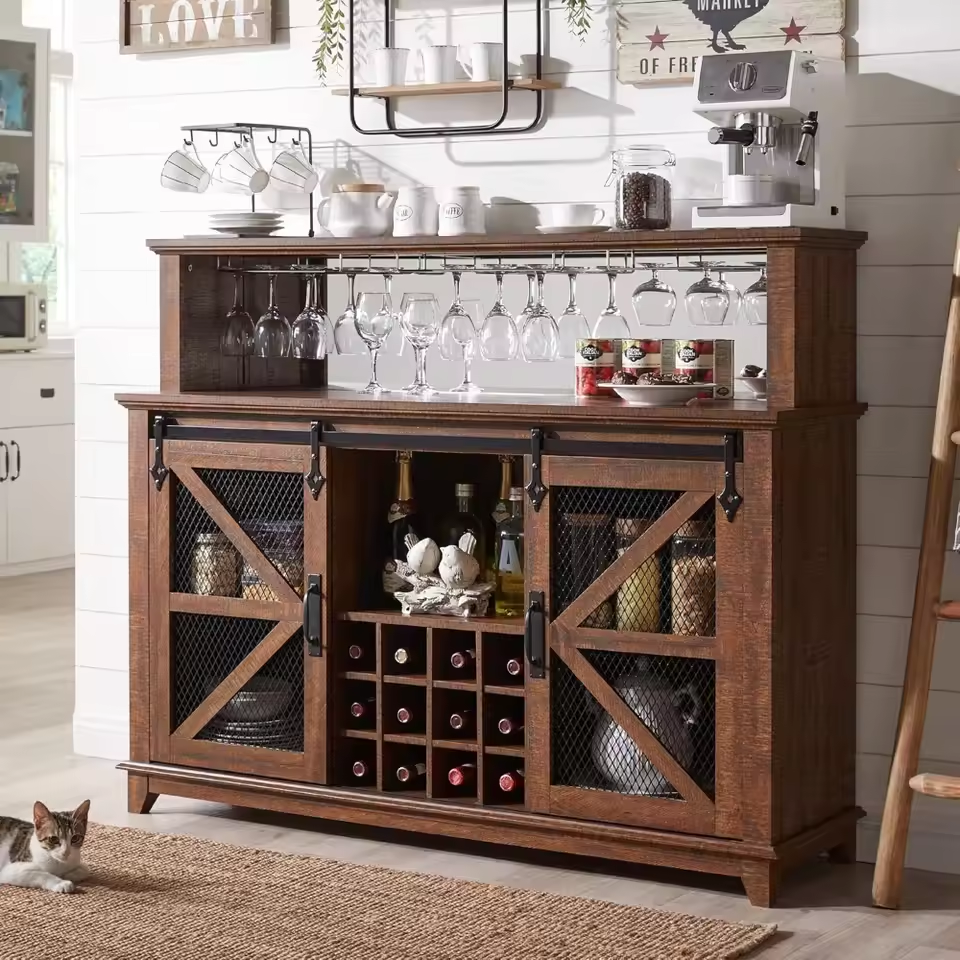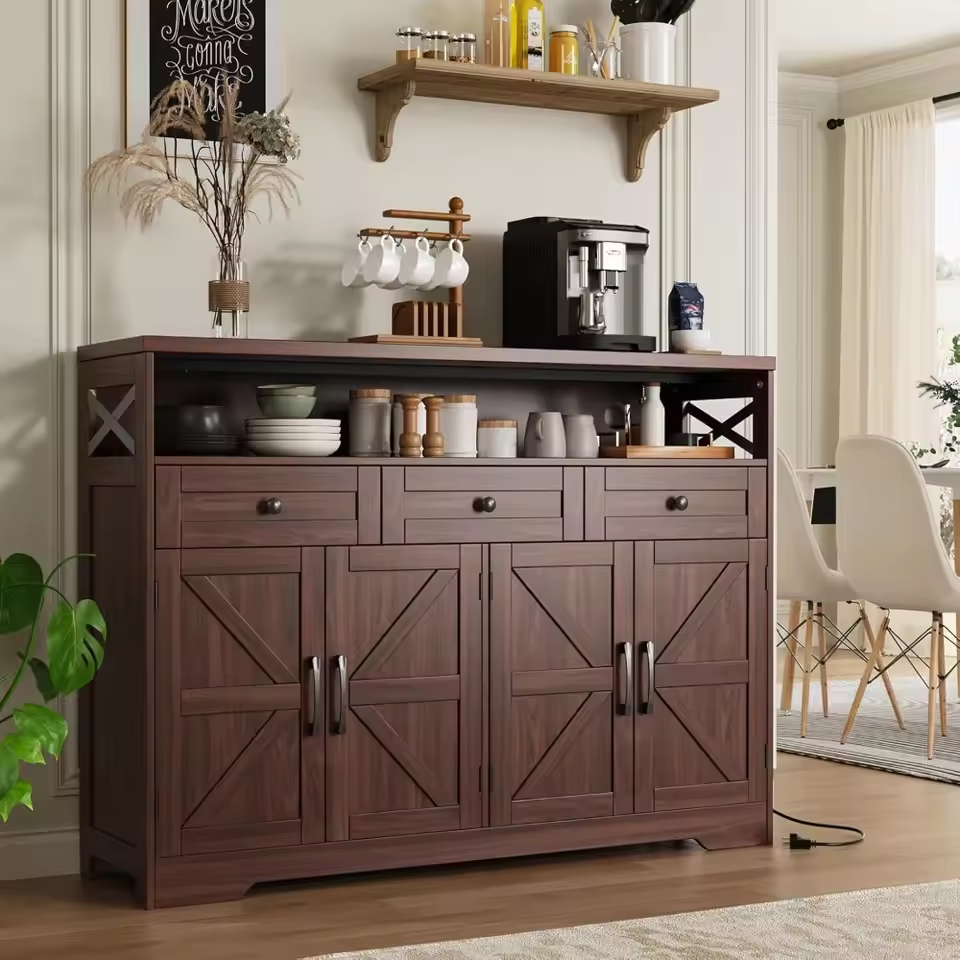Types of Kitchen Cabinet Hinges
Choosing the right type of kitchen cabinet door hinges is crucial for both functionality and aesthetics. Hinges affect how cabinet doors open, close, and integrate with your overall kitchen design. Below are the main types of hinges you should consider for your kitchen cabinets:
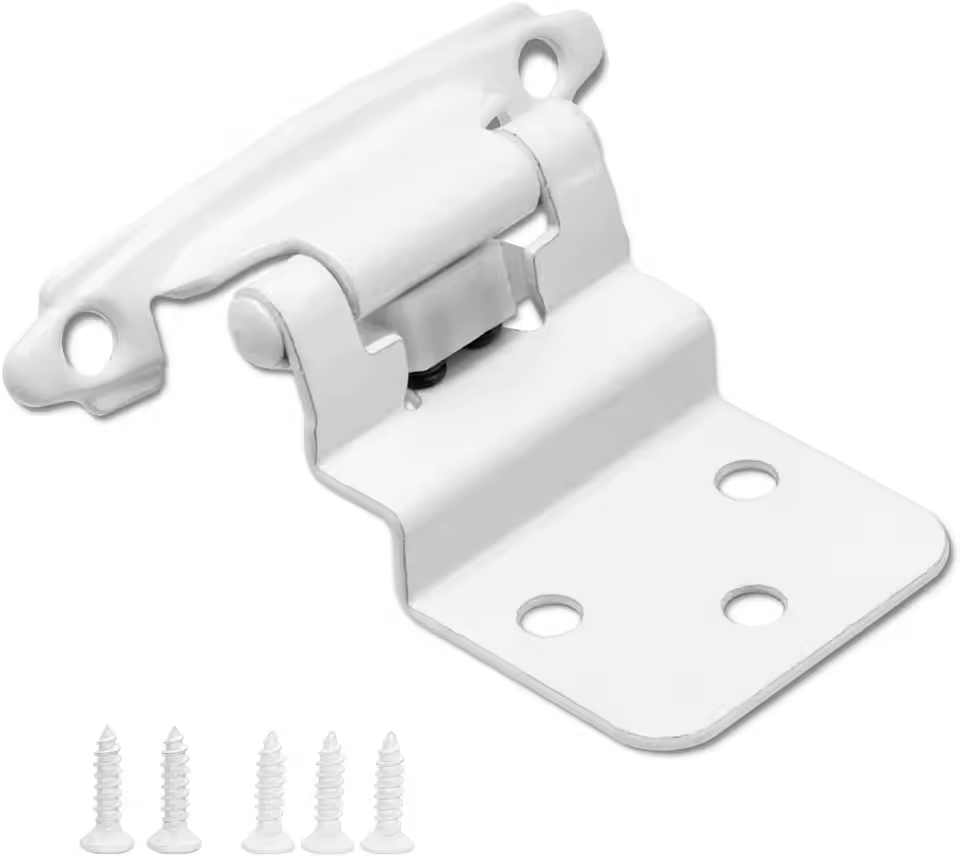
Overlay Hinges
Overlay hinges are one of the most popular types for modern cabinets. These hinges allow the door to cover the cabinet frame, leaving the frame slightly visible. Overlay hinges are commonly used with frameless cabinets but can also work with framed designs. They provide a clean, seamless look, making them ideal for contemporary kitchen styles.
Inset Hinges
Inset hinges are designed for cabinet doors that fit flush inside the cabinet frame. With this hinge type, the door does not overlap the frame; instead, it sits within the opening. Inset hinges create an elegant and streamlined appearance, perfect for traditional or rustic kitchen designs. They often require more precise installation compared to other hinge types.
Full-Overlay Hinges
Full-overlay hinges completely cover the cabinet frame, showing no visible edges of the frame. These hinges are ideal for frameless cabinets and create a sleek and uniform look. Full-overlay hinges work well in kitchens with a modern or minimalist design aesthetic. They offer excellent functionality, allowing smooth opening and closing.
European Hinges
European hinges, also known as concealed hinges, are highly regarded for their versatility and hidden design. These hinges are mounted inside the cabinet, making them invisible from the exterior. European hinges often come with adjustable features, making installation easier and ensuring a perfect fit. They are compatible with various cabinet styles and offer additional features like soft-close or self-closing mechanisms.
When selecting hinges, always keep your cabinet style and functional needs in mind. Understanding the variety of hinge options ensures your kitchen cabinets blend beauty and practicality seamlessly.
Materials Used in Cabinet Hinges
The material of your kitchen cabinet door hinges greatly impacts their durability and appearance. Different materials offer unique advantages in terms of strength, corrosion resistance, and aesthetics. Below are the commonly used materials for cabinet hinges:
Stainless Steel Hinges
Stainless steel hinges are popular for their robust strength and corrosion resistance. These hinges are ideal for kitchens because they withstand moisture and heat well. Stainless steel is also easy to clean, making it an excellent choice for busy kitchens. Its shiny surface gives modern cabinets a sleek, polished look. These hinges are particularly suitable for homes located in humid environments.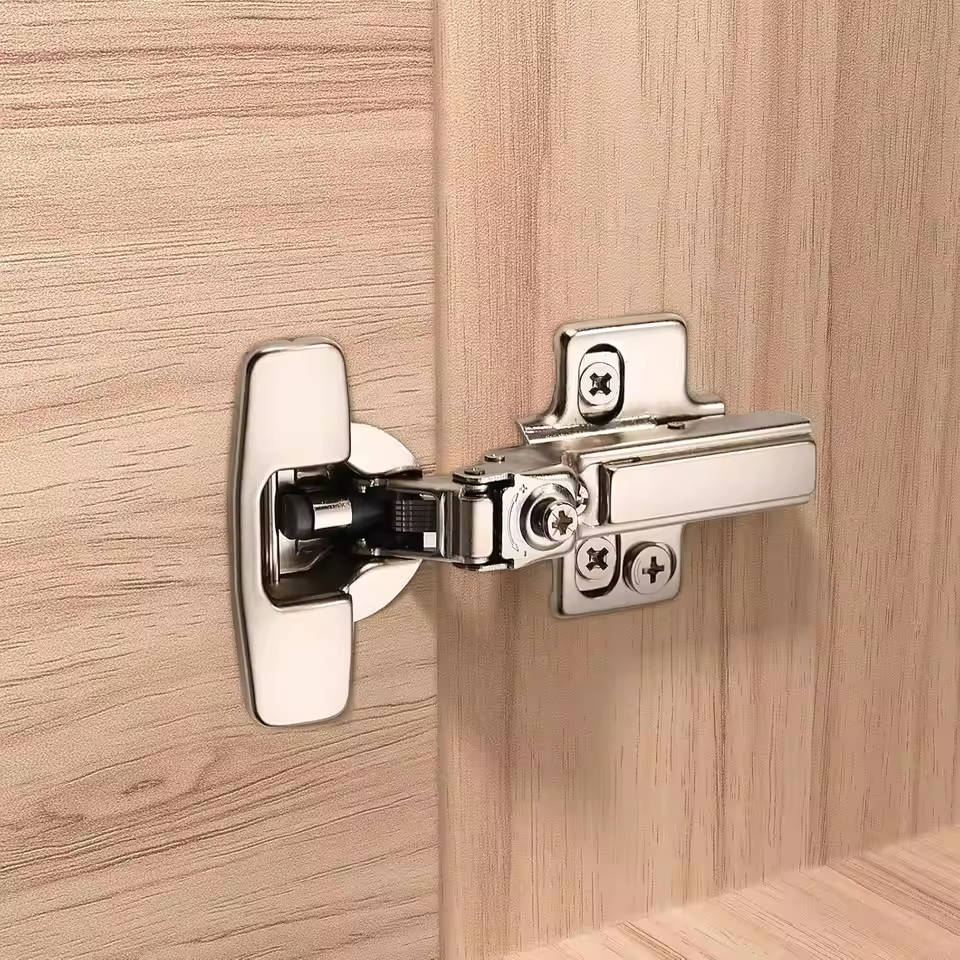
Brass Hinges
Brass hinges are chosen for their aesthetic appeal and long-lasting durability. They are resistant to rust, making them ideal for traditional or classic kitchen designs. Brass hinges add a warm and elegant touch to cabinets. With proper maintenance, these hinges can maintain their golden hue for years. They are also slightly softer than stainless steel, allowing for easier adjustments during installation.
Nickel-Plated Hinges
Nickel-plated hinges combine durability with a stylish finish. The nickel coating protects the base metal from tarnishing or rusting. These hinges are perfect for both modern and traditional kitchen styles. Nickel-plated hinges are easy to maintain, requiring only occasional cleaning. They are available in various sheen levels, from matte to glossy, to match different cabinet designs.
When choosing materials, consider your kitchen’s overall style and environmental factors. High-quality hinges ensure long-lasting performance and enhance the beauty of your cabinets.
How to Select the Best Hinges for Your Cabinet Design
Choosing the best kitchen cabinet door hinges requires careful consideration of style and functionality. The right hinges ensure a perfect balance between aesthetics and durability. Below are key factors to guide your decision.
Matching Hinges to Your Cabinet Style
The hinge style must complement your cabinet design for a cohesive look.
- Frameless Cabinets: Use concealed or full-overlay hinges for a modern, seamless appearance.
- Framed Cabinets: Overlay or inset hinges work well, depending on the desired overlap.
- Traditional Kitchens: Opt for brass or nickel-plated hinges for a classic and elegant feel.
- Contemporary Kitchens: European hinges with soft-close features suit minimalist designs.
Ensure the hinge design aligns with the kitchen’s overall theme.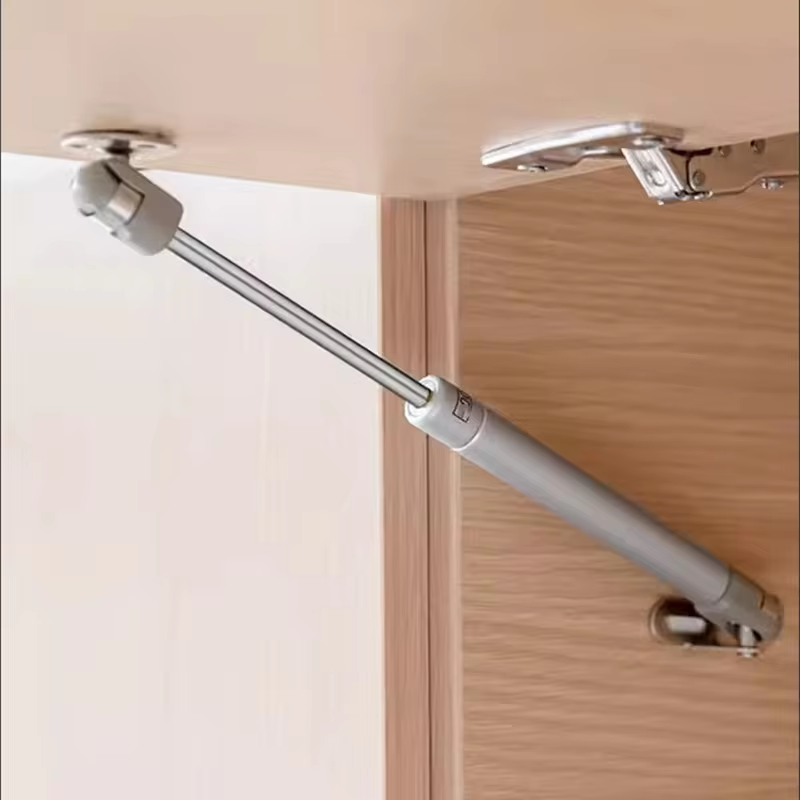
Considering Cabinet Door Weight
The weight of your cabinet doors plays a vital role in hinge selection.
- Heavy Doors: Use durable materials like stainless steel or heavy-duty hinges for strong support.
- Lightweight Doors: Standard concealed or overlay hinges often provide adequate support.
Test the hinges to ensure smooth and stable function under the door’s weight.
Finishes and Aesthetic Considerations
Hinge finishes impact the overall kitchen aesthetic. Make your choice based on the following:
- Matching Finishes: Align hinge finishes with cabinet hardware, like handles or knobs.
- Rustic Kitchens: Warm finishes like brass pair well with wooden cabinet tones.
- Modern Kitchens: Chrome or nickel-plated finishes enhance sleek, minimalist designs.
- Custom Looks: Select matte, glossy, or antique hinge finishes to match your decor.
Prioritize both appearance and durability when finalizing the finish.
By considering style, weight, and finishes, you can select hinges that enhance your kitchen’s design and functionality.
Common Features and Mechanisms in Cabinet Hinges
Understanding key features and mechanisms in kitchen cabinet door hinges can enhance your kitchen’s functionality. Below are common features that improve the user experience and durability of cabinet hinges.
Soft-Close Mechanisms
Soft-close hinges prevent doors from slamming shut by slowing their movement. This feature ensures quiet and smooth closing. It is ideal for families with children to protect fingers from accidental pinching. Soft-close mechanisms also enhance hinge longevity by reducing impact stress.
Self-Closing Hinges
Self-closing hinges automatically pull the door shut once it is partially closed. These hinges are perfect for busy kitchens as they reduce the need for manual effort. Self-closing hinges keep cabinet doors secure and flush, preventing them from staying ajar. This feature can improve the overall neatness of your kitchen.
Adjustable Hinges for Easy Installation
Adjustable hinges offer flexibility during installation and maintenance. You can fine-tune them to ensure a perfect fit. These hinges simplify alignment issues, especially for inset or frameless cabinets. Adjustable hinges often come with easy-to-use screws for quick adjustments. They are ideal for achieving precise door positioning and smooth operation.
Understanding these features helps in selecting hinges that match your needs and cabinet style.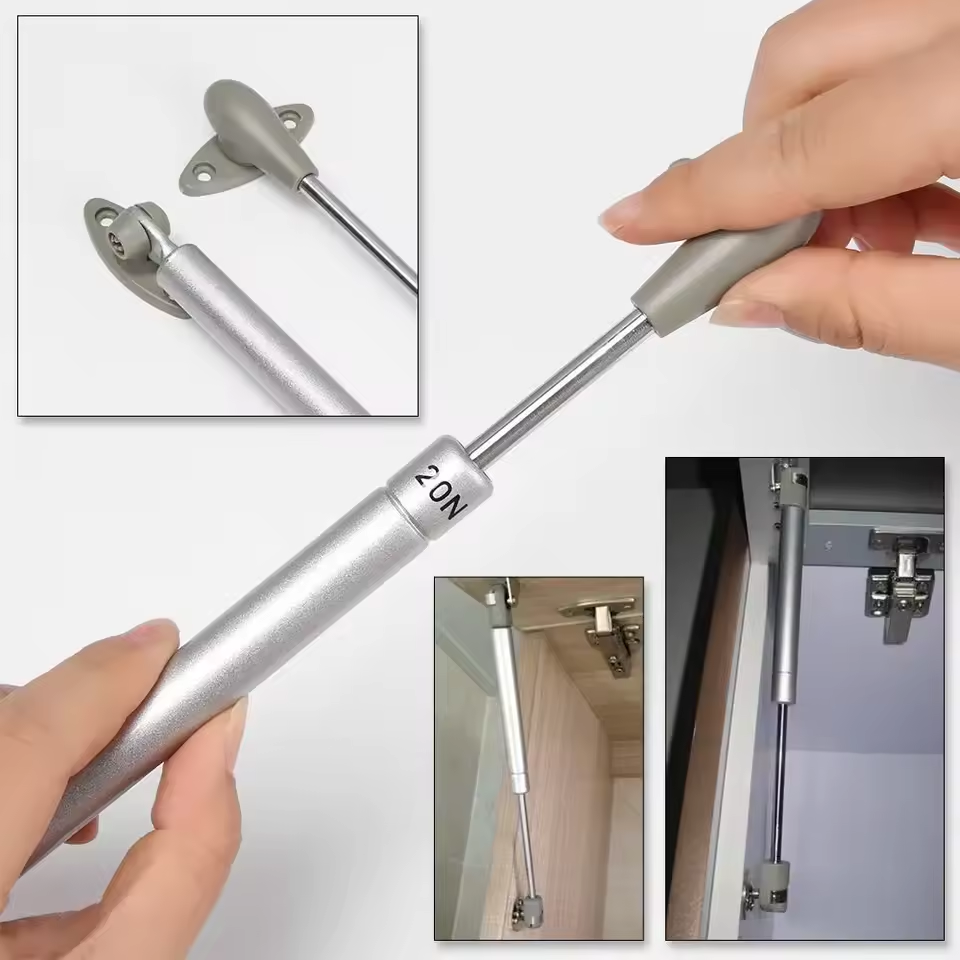
Measuring and Installing Kitchen Cabinet Hinges
Installing kitchen cabinet hinges requires careful planning and accurate measurements. Proper installation ensures smooth operation and durability. Below, you’ll find tools required, critical steps, and common mistakes to watch out for.
Tools Required for Installation
Having the right tools simplifies the hinge installation process. Here’s what you’ll need:
- Screwdrivers: Choose sizes compatible with hinge screws.
- Drill: Use for pre-drilling holes and securing screws.
- Measuring Tape: Ensure precise placement of hinges.
- Pencil: Mark hinge positions accurately.
- Level: Ensure cabinet doors are aligned and level.
- Clamps: Secure doors while attaching hinges.
Gather these tools before starting to ensure a smooth workflow.
Steps to Accurately Measure Hinge Placement
Accurate hinge placement ensures functionality and aesthetic appeal. Follow these steps:
- Measure Door Height: Measure from top to bottom to position hinges evenly.
- Mark Hinge Locations: Place hinges about six inches from cabinet edges.
- Align Hinges: Ensure hinge alignment matches cabinet design (overlay, inset, or frameless).
- Drill Pilot Holes: Mark and drill pilot holes to prevent wood splitting.
- Install Hinges: Secure hinges with screws, ensuring tight and flush fitting.
- Attach Doors: Mount cabinet doors using clamps for stability.
Take time with measurements to avoid misalignment issues.
Common Installation Mistakes and How to Avoid Them
Proper hinge installation avoids many functional problems. Here are common mistakes and solutions:
- Incorrect Measurements: Double-check measurements before drilling holes.
- Over-Tightening Screws: Stop threading once screws are flush to avoid hinge damage.
- Misaligned Hinges: Use a level to ensure straight placements.
- Skipping Pilot Holes: Always drill pilot holes to avoid splitting.
- Ignoring Testing: Test door movement before finishing to ensure proper function.
Follow these tips to achieve flawless hinge installation without errors.
Replacing or Upgrading Existing Cabinet Hinges
Upgrading or replacing kitchen cabinet door hinges improves functionality and refreshes your kitchen’s look. Over time, hinges can wear out, become loose, or lose their aesthetic appeal. Below is a guide to help you identify when to replace hinges and how to upgrade them efficiently.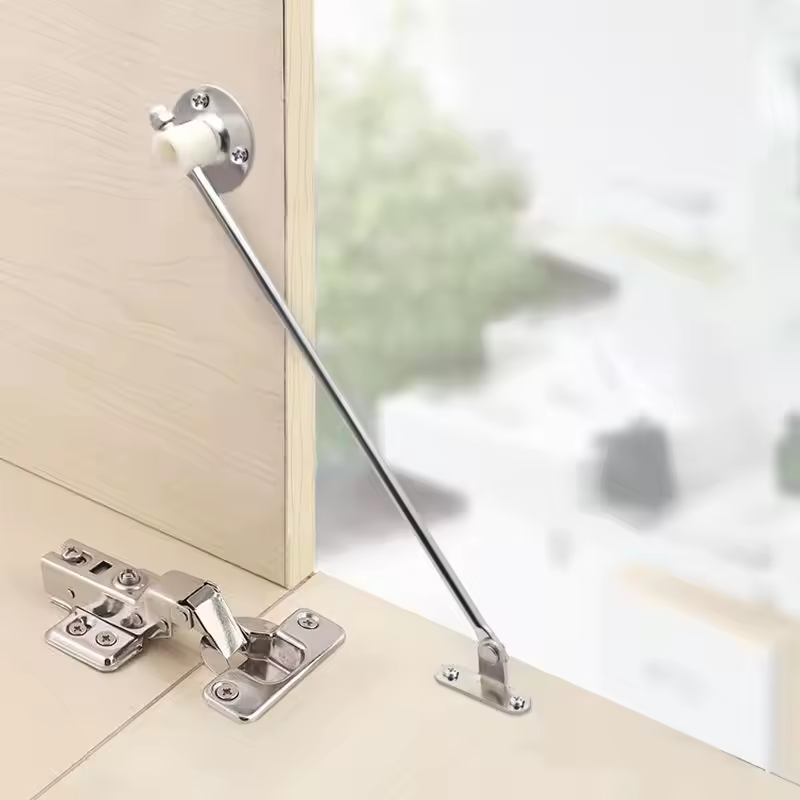
Signs It’s Time for Replacement
Identifying the right time to replace cabinet hinges is important for maintaining functionality and design. Look for these common signs:
- Noisy Operation: Hinges squeak or creak when opening or closing.
- Rust or Corrosion: Visible rust affects hinge durability and appearance.
- Door Misalignment: Doors sag, become uneven, or fail to close properly.
- Broken Mechanisms: Hinges no longer support soft-close or adjustable features.
- Aesthetic Wear: Hinges appear worn-out or clash with updated kitchen designs.
These signs indicate it’s time to replace or upgrade your hinges.
Tips for Choosing Upgraded Hinges
Upgraded hinges improve both performance and appearance. Keep the following tips in mind when selecting replacements:
- Match Your Cabinet Style: Choose hinges that complement framed or frameless cabinets.
- Consider Features: Opt for soft-close or self-closing options for added convenience.
- Select Durable Materials: Stainless steel or brass hinges resist rust and wear.
- Focus on Finish: Align hinge finishes with cabinet hardware (knobs, handles).
- Verify Compatibility: Ensure the hinges fit your cabinet design and door weight.
Upgrading with the right hinges enhances your kitchen’s functionality and aesthetic appeal.
Step-by-Step Guide to Replacing Hinges
Follow these steps to effectively replace kitchen cabinet door hinges:
- Gather Tools: Use screwdrivers, a drill, measuring tape, and clamps.
- Remove Old Hinges: Unscrew old hinges carefully to avoid damaging the cabinet or door.
- Measure and Mark Placement: Align new hinges based on the cabinet design (overlay, inset, or frameless).
- Drill Pilot Holes: Prevent splitting by drilling holes for the new hinges.
- Install New Hinges: Attach hinges with screws, tightening them firmly but not excessively.
- Test Door Movement: Ensure smooth opening, closing, and alignment.
By following these steps, you’ll achieve a precise and functional hinge replacement.
Replacing or upgrading cabinet hinges breathes new life into your kitchen while enhancing usability.
Maintenance Tips for Long-Lasting Cabinet Hinges
Proper maintenance ensures your kitchen cabinet door hinges remain functional and visually appealing for years. Follow these tips to keep them in excellent condition.
Cleaning and Lubricating Hinges
- Regular Dust Removal: Wipe hinges with a soft cloth to remove dust and debris weekly.
- Use Mild Cleaners: Apply a mild soap solution to clean grime, avoiding harsh chemicals that may damage finishes.
- Dry Completely: Always dry hinges thoroughly to prevent rust or corrosion after cleaning.
- Apply Lubrication: Use a silicone-based lubricant or light machine oil to ensure smooth operation. Avoid over-applying to prevent residue buildup.
- Check for Rust: Inspect hinges regularly for rust and treat with rust remover to extend their lifespan.
Effective cleaning and lubrication keep your hinges functional and protect their appearance.
Adjusting Loose or Misaligned Hinges
- Inspect Tightness: Check screws periodically to ensure they are secure and not loose.
- Tighten Screws: Use a screwdriver to tighten loose screws, but avoid overtightening to prevent damage.
- Realign Misaligned Hinges: Loosen screws slightly, adjust the hinge position, and retighten screws for proper alignment.
- Test Door Movement: Open and close the cabinet door to confirm smooth operation and alignment.
- Replace Worn Parts: If hinges don’t tighten or adjust, consider replacing them with new, compatible ones.
Regular adjustments prevent long-term issues and keep cabinet doors working perfectly.
Cost and Budget Considerations for Kitchen Cabinet Hinges
Selecting kitchen cabinet door hinges involves balancing cost and quality. Proper budgeting ensures long-lasting functionality and design harmony. Below, we examine price ranges and tips for balancing affordability and quality.
Price Range for Different Hinge Types
Hinge prices vary based on type, material, and additional features. Here’s an overview:
- Overlay Hinges: Typically cost $2–$5 per hinge. Affordable and widely available.
- Inset Hinges: Usually priced between $4–$8 per hinge. Slightly higher due to precise fitting.
- Full-Overlay Hinges: Cost around $5–$10 each. Sleek design justifies the price.
- European Hinges: Range from $8–$15 per hinge. Premium features drive up cost.
- Special Features: Hinges with soft-close or self-closing mechanisms can add $3–$10 per hinge.
Premium hinges provide extra features but may require a higher investment. Choose based on your kitchen needs and style.
Balancing Quality and Affordability
When budgeting, ensure you focus on both performance and cost. Follow these tips:
- Compare Materials: Brass and stainless steel hinges last longer but cost more upfront.
- Prioritize Key Features: Opt for durable hinges with essential features like soft-close mechanisms.
- Buy in Bulk: Purchase packs for cost-effective pricing, especially during renovations.
- Consider Brand Reputation: Trusted brands often deliver better quality at competitive prices.
- Evaluate Long-Term Value: Spending more on durable hinges prevents frequent replacements.
Balancing quality and budget creates a smart investment in kitchen cabinet hinges.
